Public Health Case Study: Herbert's Health and Interventions
VerifiedAdded on 2022/11/14
|5
|860
|82
Case Study
AI Summary
This case study examines Herbert, a 65-year-old man facing multiple health challenges including chronic hypertension, obesity, and vision problems, compounded by lifestyle factors such as excessive alcohol consumption, a poor diet, lack of exercise, financial problems, stress, and anxiety. The assignment addresses key questions regarding the prevention of illness and health promotion, defining each concept and differentiating between them with references to WHO guidelines. It then explores various health interventions applicable to Herbert's case, including the Health Beliefs Model, psychosocial interventions, tertiary interventions, Maslow's hierarchy of needs, and stress management techniques, providing definitions and explaining how each approach could be used to improve Herbert's health outcomes. The study aims to offer a comprehensive analysis of Herbert's situation and propose effective strategies for promoting his health and preventing further illness.
1 out of 5
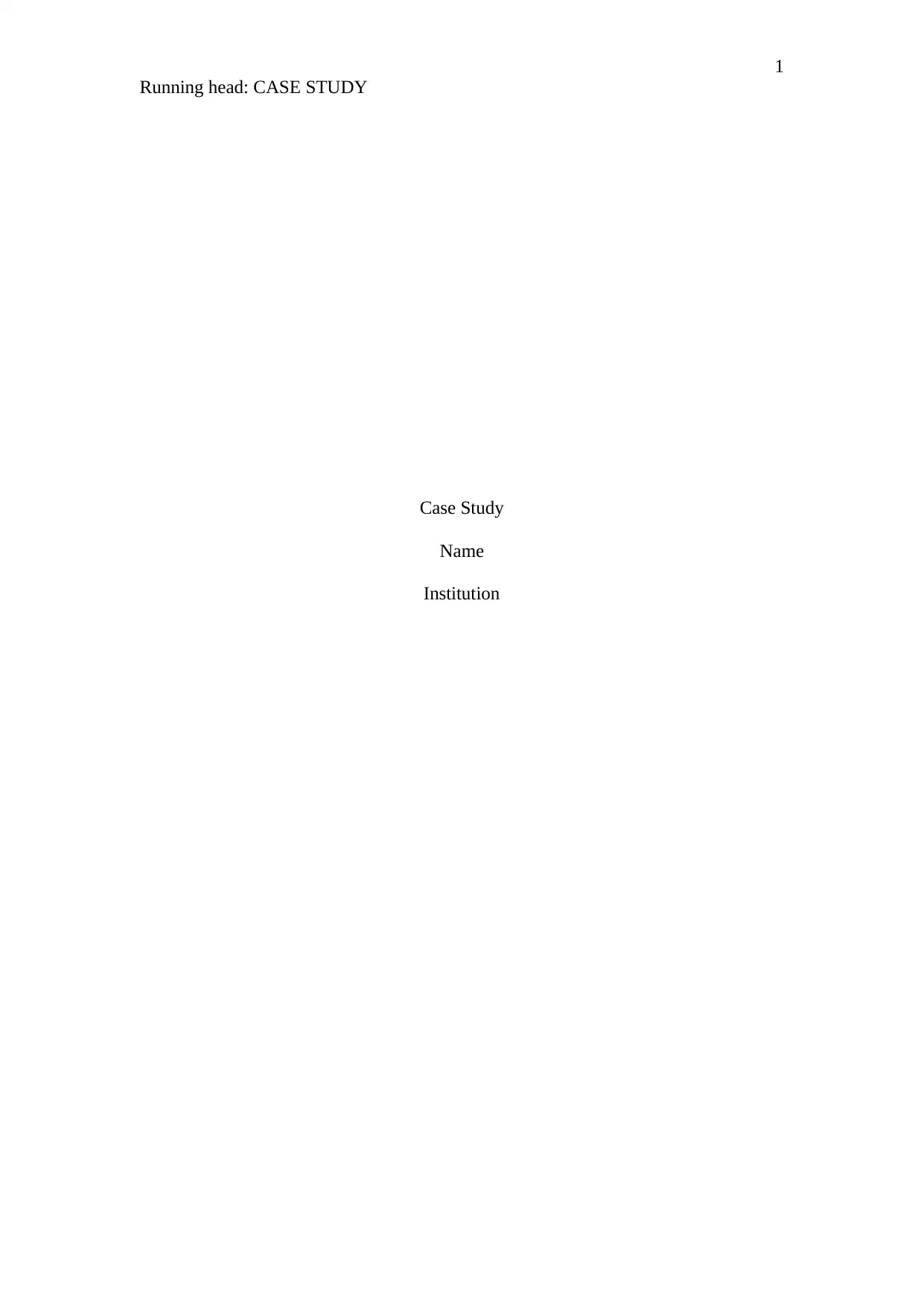
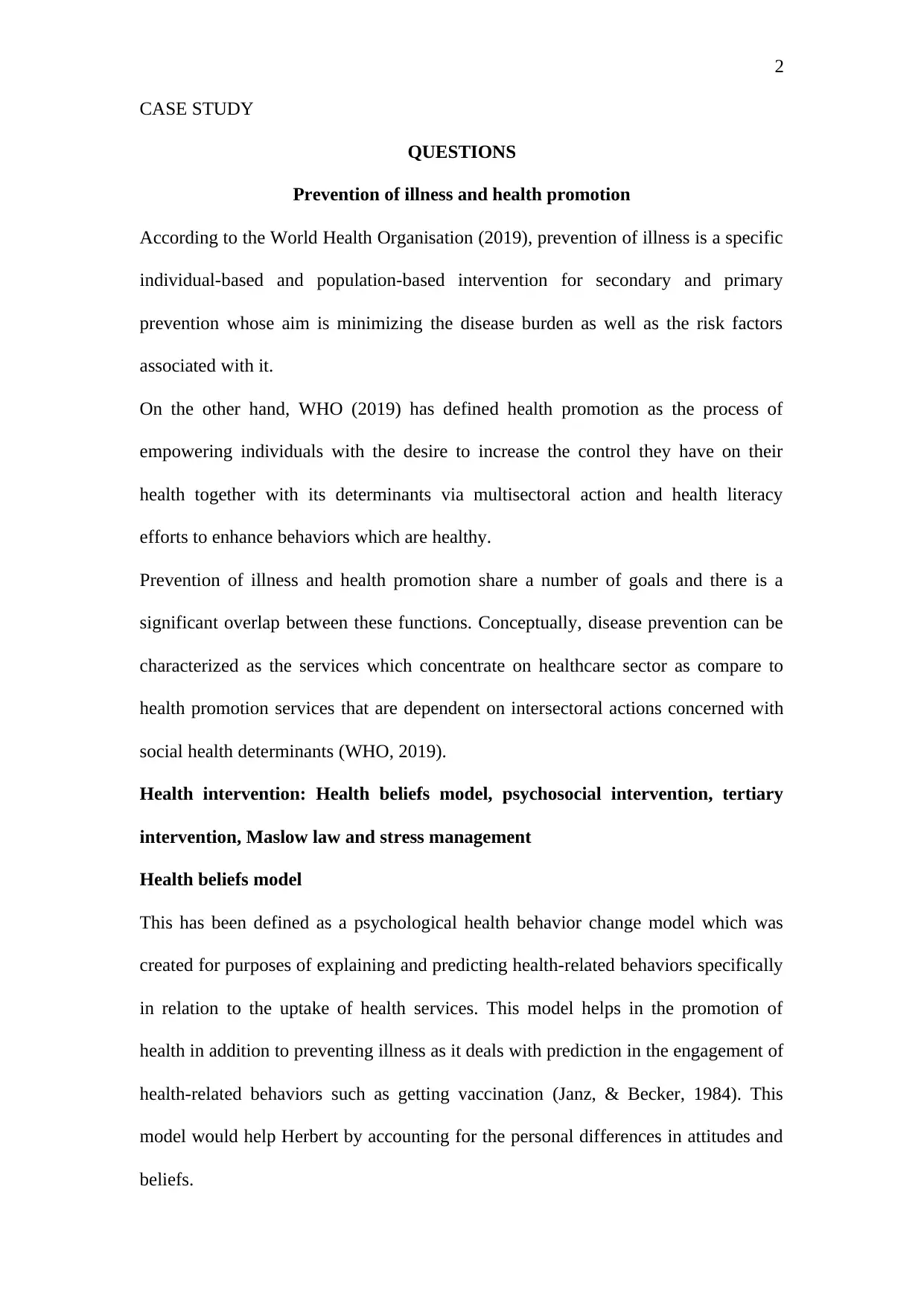
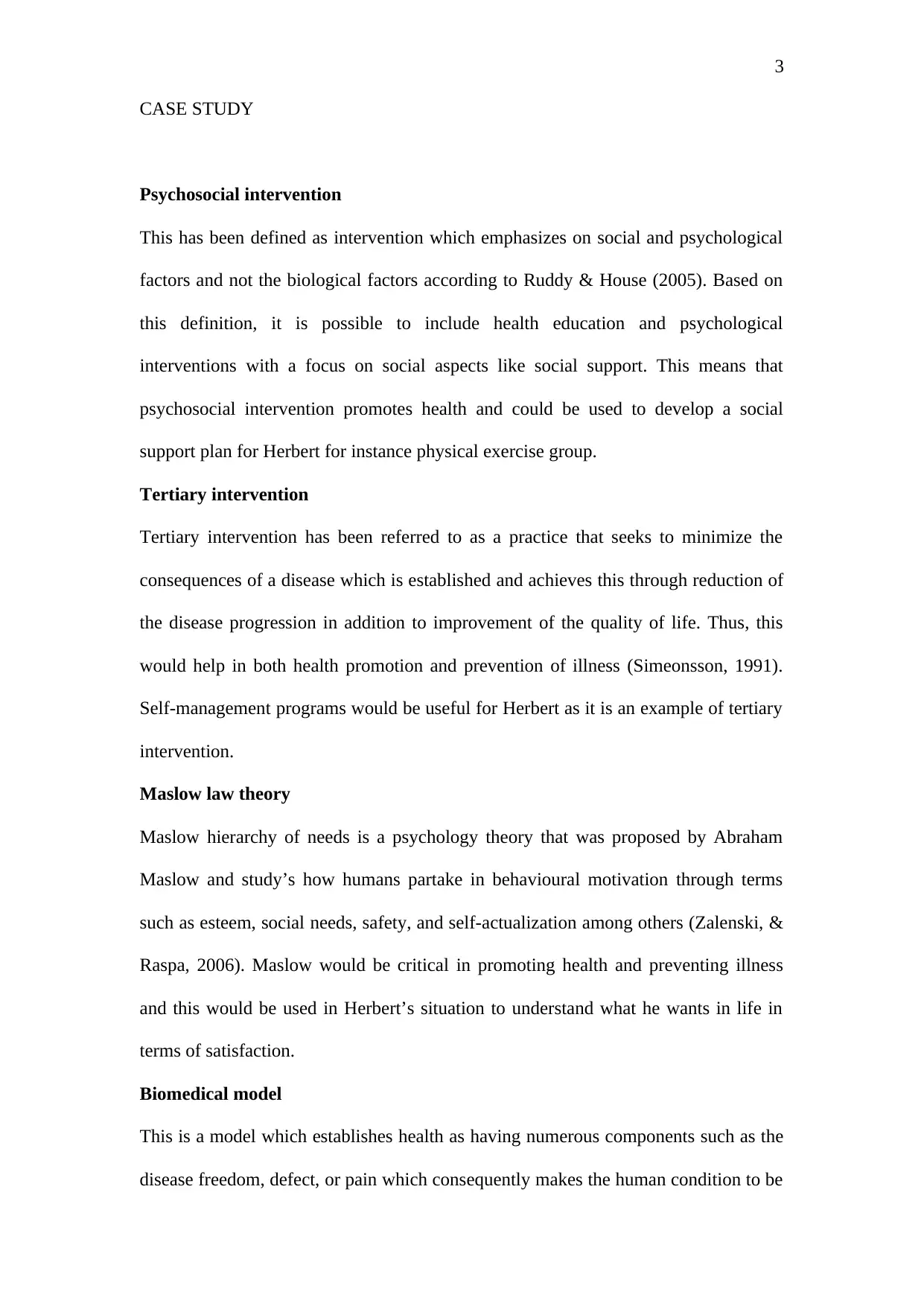

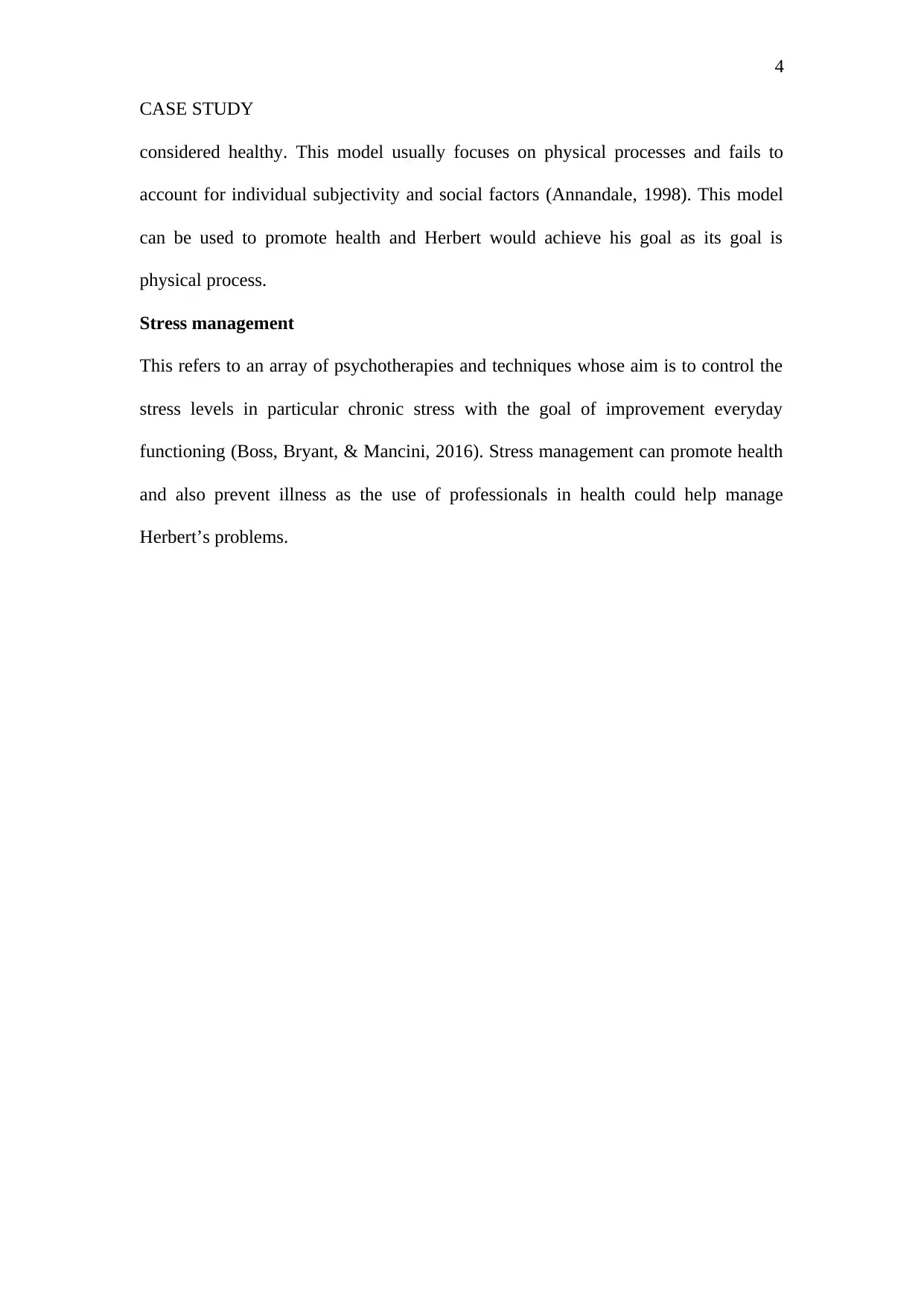
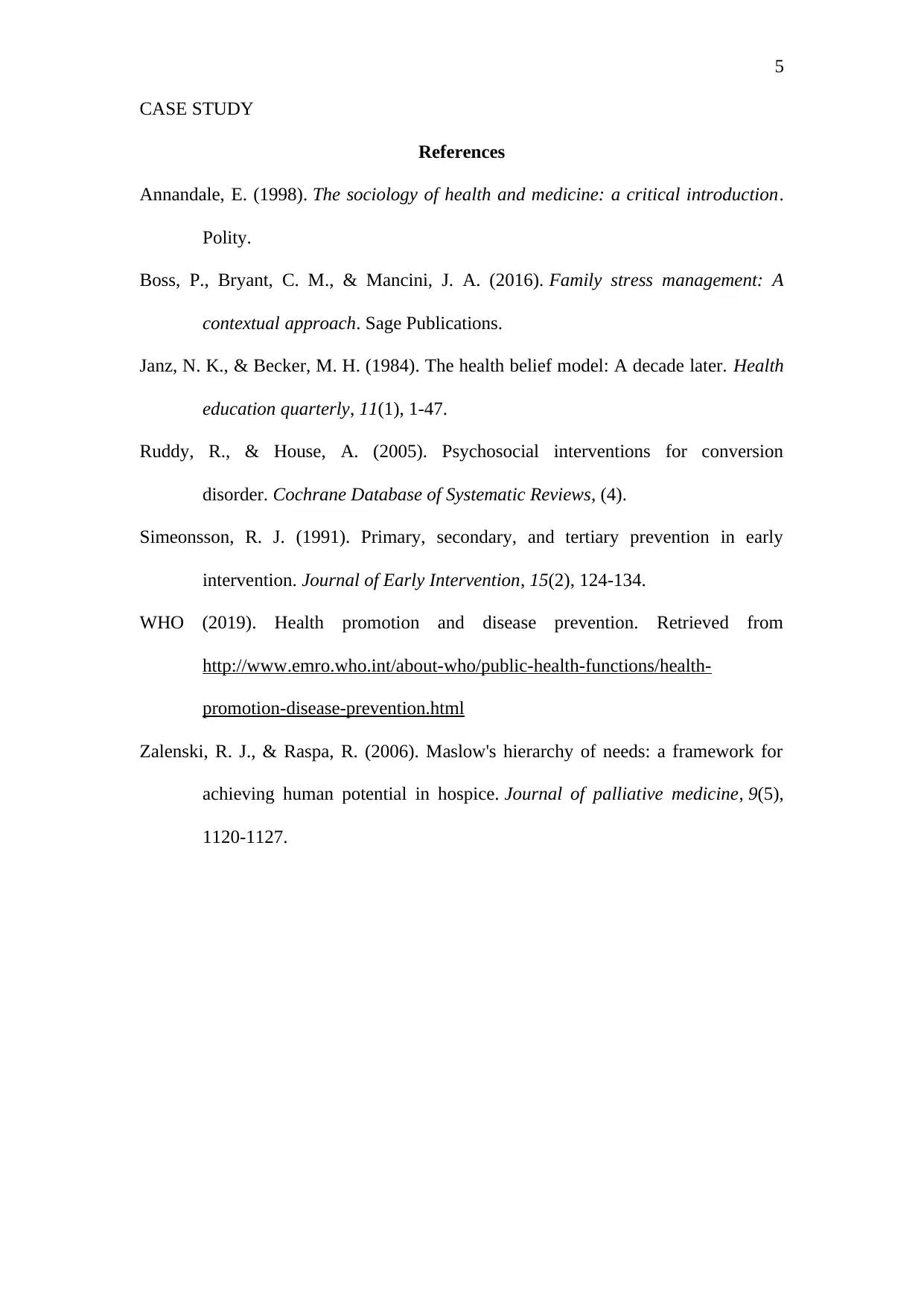






![[object Object]](/_next/static/media/star-bottom.7253800d.svg)